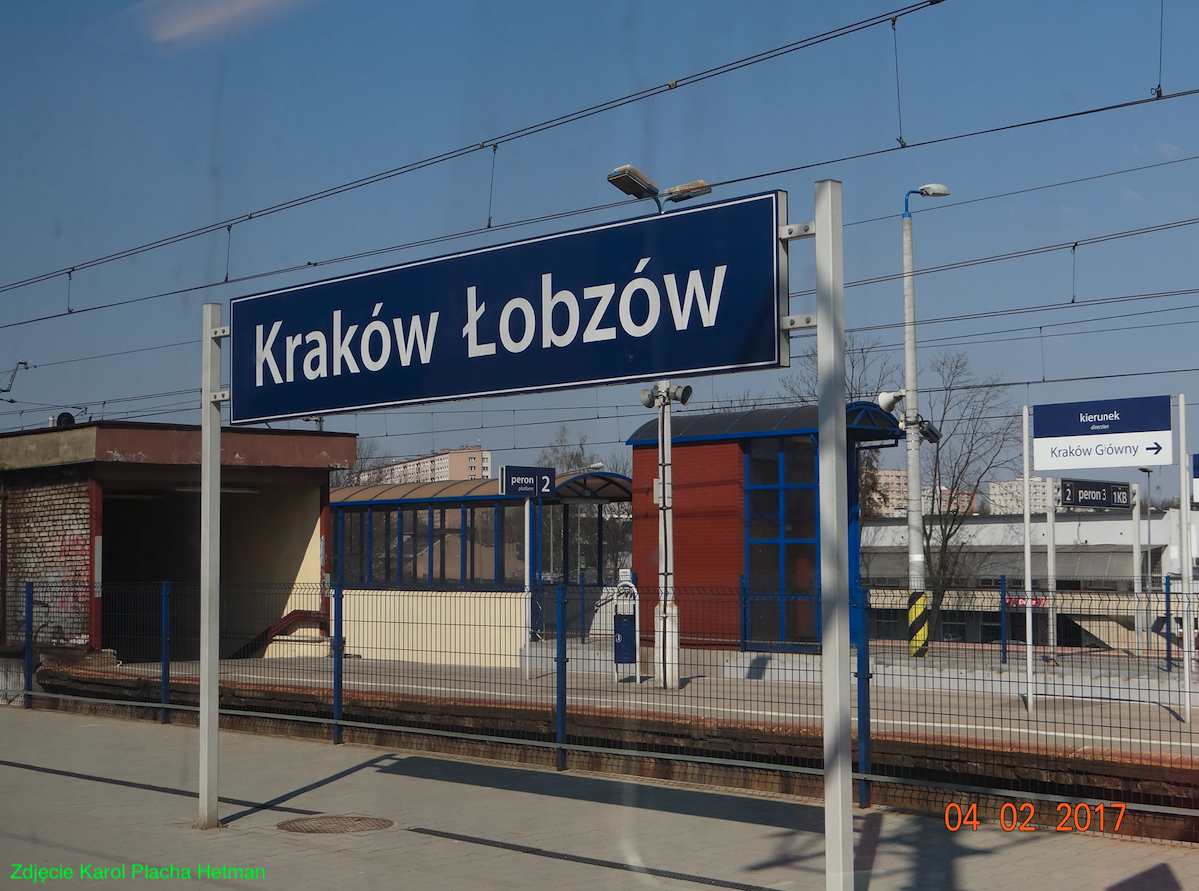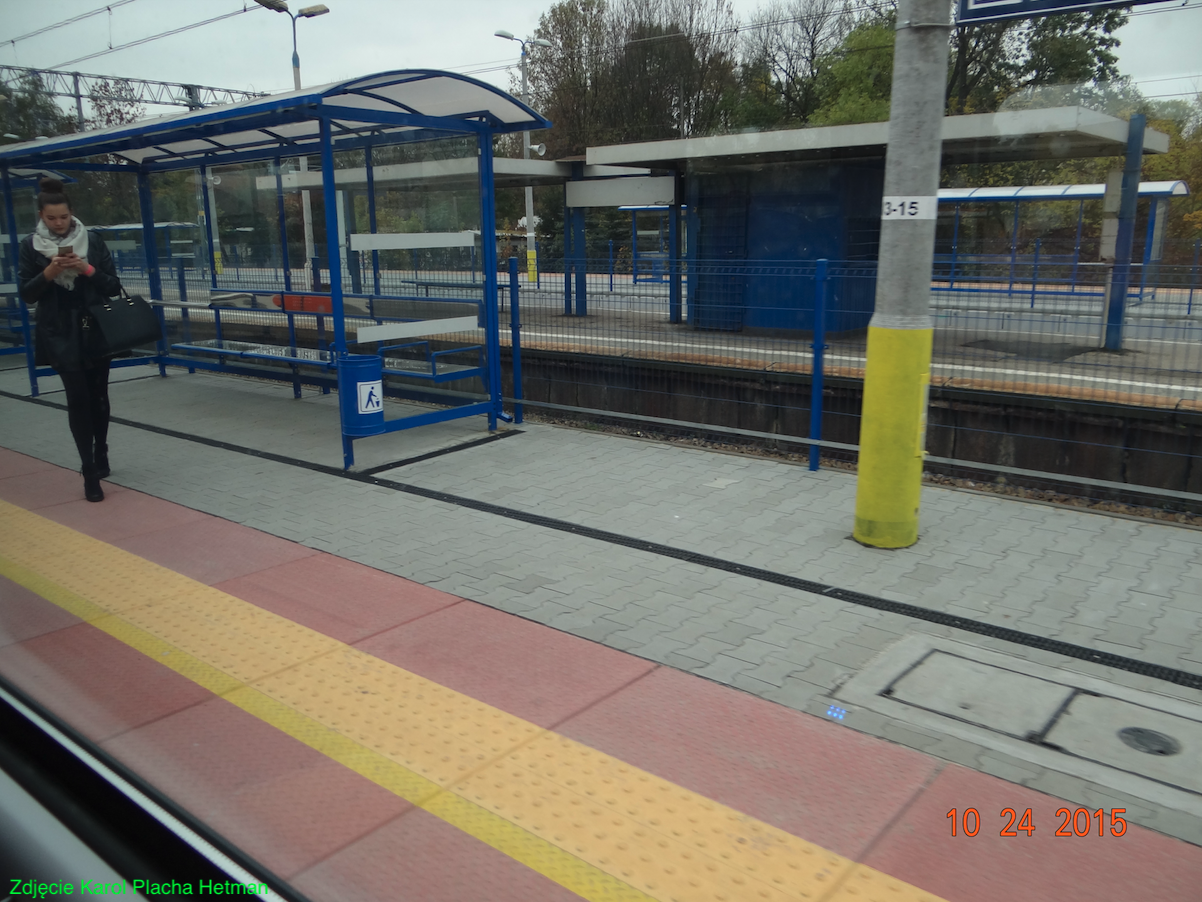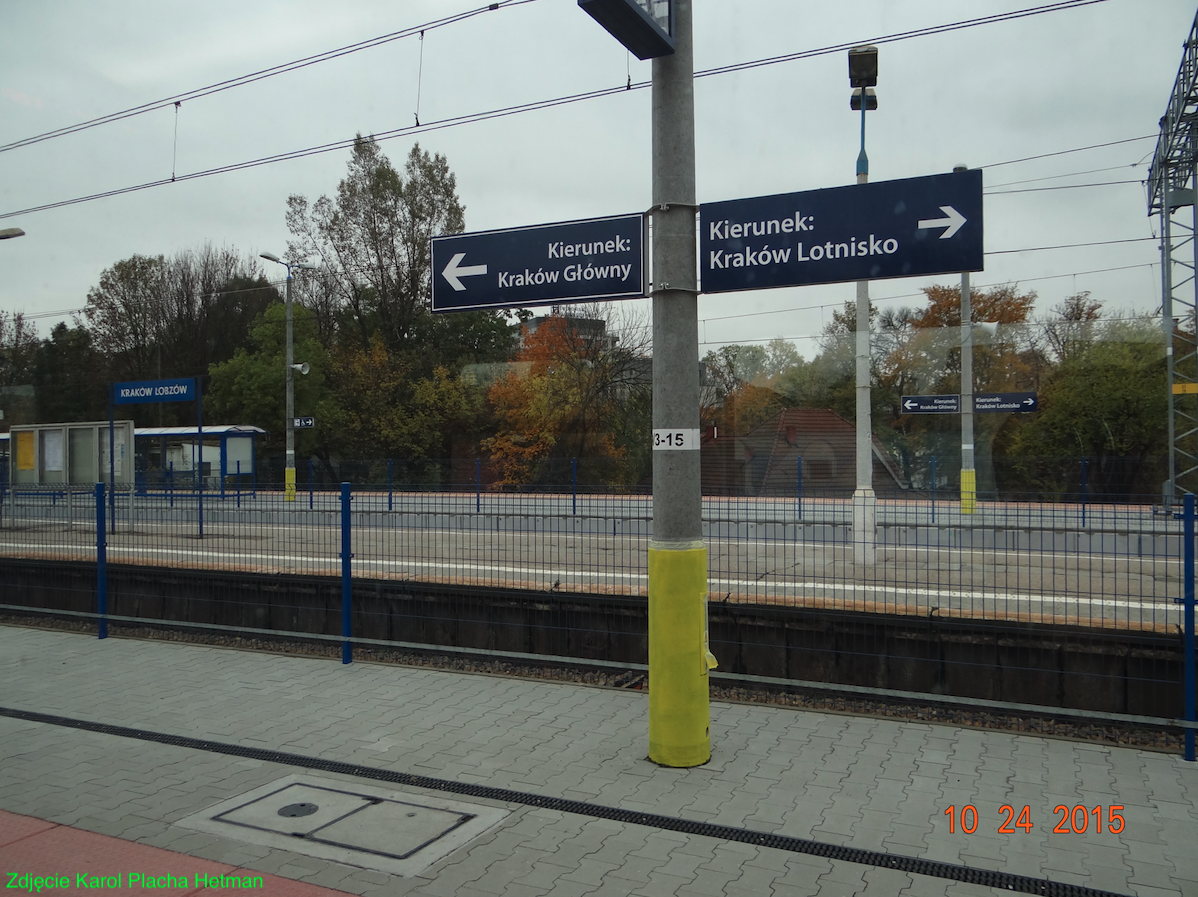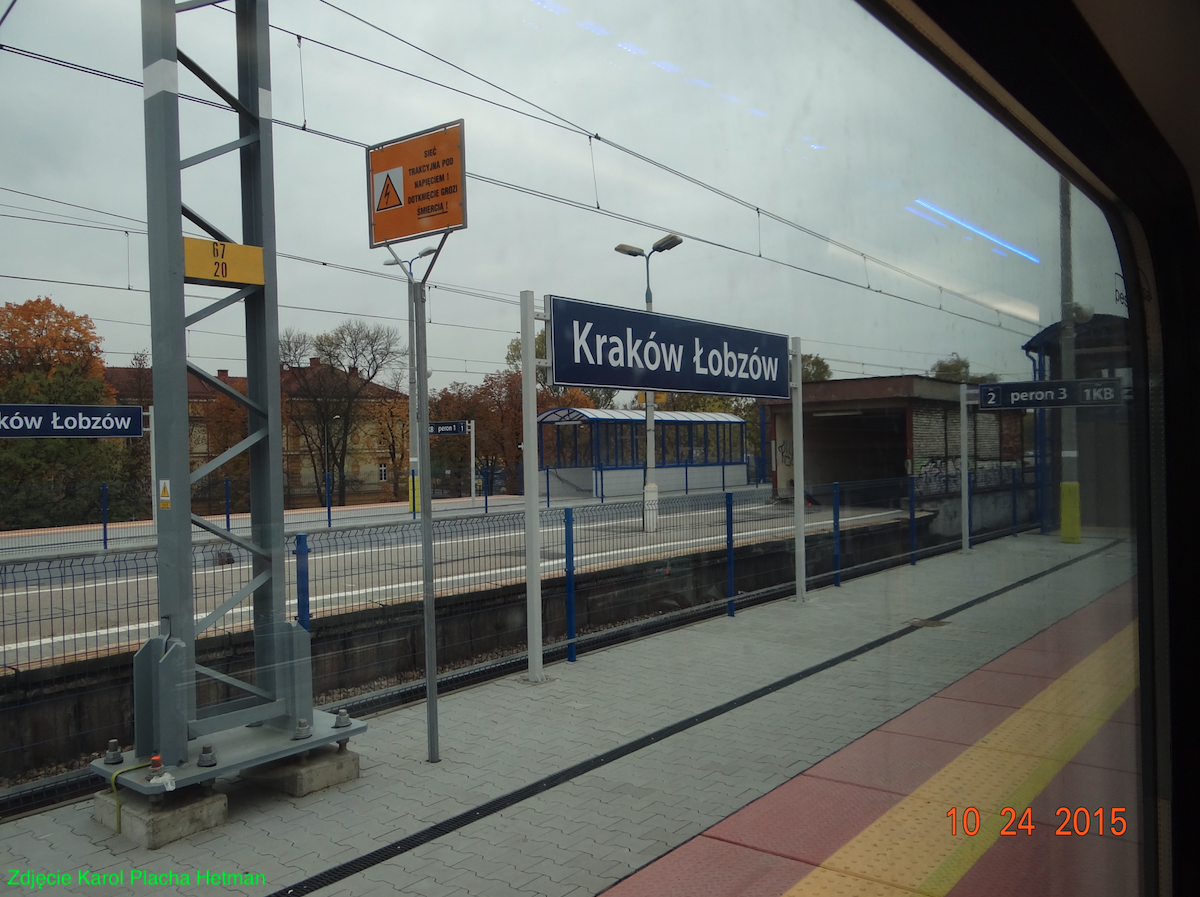Kraków 2023-12-19
Kraków Łobzów passenger stop.
Geographic coordinates: 50.082N 19.917E. Elevation 216 m.





Krakow Łobzów.
Kraków Łobzów was a royal village located between the city of Kraków and the village of Bronowice Małe. The village of Łobzów, currently the historic district of Łobzów, lies west of the center of Krakow. In Łobzów there is the Royal Palace built during the reign of King Casimir the Great. It was the royal summer residence. Around 1357, a Gothic castle was built, which during the reign of King Stefan Batory was transformed into a palace with Mannerist features. The reconstruction was carried out by Santi Gucci, who also designed a large garden. Further changes took place during the reign of King Sigismund III, when Giovanni Trevano gave the palace a baroque decoration. In the period 1642–1646, the neglected palace was renovated. The monarch donated the village of Łobzów to the University of Krakow. After the Third Partition of Poland, the Austrian authorities took Łobzów away from the university.
In 1875, the partitioners organized the Infantry Cadet School in the palace. It was already a time when the partitioners were transforming Kraków into a fortress. They transformed many facilities for military purposes. They built new barracks, fortresses, redoubts, forts, warehouses, detention centers, hospitals and field hospitals. In 1900, Łobzów had an area of 140 hectares and 86 buildings. 1,364 people lived here.
Currently (2023) the palace building belongs to the Krakow University of Technology. In 1919, the stadium of the Military Sports Club (WKS) "Wawel" was established in Łobzów. During the Second Polish Republic, the following Polish Army units were stationed in Łobzów: Cadet Corps No. 1 (1918-1921), 20th Krakow Land Infantry Regiment, 6th Light Artillery Regiment, Infantry Reserve Cadet School No. 5 (1927-1928), Reserve Cadet Battalion Piechoty No. 5 (1928–1929). Part of the area belonged to monks of the Catholic Church who ran a printing house here. The printing house was nationalized in 1950, and on the remaining area, taken from the monks, the communists built apartment blocks. The alley currently called (2023) Młynówka Królewska runs along the trail of a river that was filled in in the 1970s.
The natural border of Łobzów, from the north, is the railway line. Wrocławska Street is also located here, which, before the construction of the Mysłowice - Kraków railway line, was one of the routes leading from Krakow towards the west. It was the historic Olkusz Route, which led to Wrocław. The current Wrocławska Street was marked out just after the railway line was opened, around 1848. The beginning of Wrocławska Street is Nowy Kleparz and Prądnicka Street. A military hospital was built nearby (currently the 5th Military Clinical Hospital with the General Marian Garlicki Polyclinic). Wrocławska Street is approximately 1,800 m long and ends at the barracks. In communist times, there was the 6th Pomeranian Airborne Division here, and currently (2023) the 6th Airborne Brigade. There is also the Brigade Command Headquarters at Wrocławska Street. During the communist era, the PZL-Kraków plant was also located here.
Especially in the second half of the 19th century, in Krakow, the Austrians expanded military facilities. This was facilitated by rail transport. Most of them were so-called barracks, built at relatively low cost. A little later, two- and three-story red brick buildings were built, with heating, running water, sanitary facilities and electrical installations. This type of barracks was built in Łobzów. Barracks for artillery, home defense infantry and an infantry cadet school were built in Łobzów. This school occupied, among others, the royal palace in Łobzów (1876).
Wrocławska Street was paved and had sidewalks on both sides. At the barracks, the street ended with a loop where, from around 1925, public transport buses turned around. It was planned to build a tram line from Długa Street, but this plan was never implemented.
There were three railway viaducts on the section of the Kraków Główny - Łobzów railway line. The first one along Prądnicka Street. Here a large steel viaduct with two lanes was built under the tracks to accommodate all modern vehicles. Next, there was a tunnel under the tracks along Władysława Łokietka Street. A similar tunnel was built at the end of Wrocławska Street, opposite the barracks. Only a wagon could pass under this bridge. The carriage didn't fit. However, along Lucjan Rydla Street, there was an ordinary rail and road crossing operated by a crossing guard. The crossing was replaced by a viaduct in 2022.
The viaduct at the end of Wrocławska Street was rebuilt several times. Originally it was an arched vault with two tracks. During the German occupation (1939-1945), when a new freight line was built through the Olsza station, a second, larger viaduct was built. The first viaduct was narrow and buses could not fit under it, so in 1967 it was rebuilt. Traffic lights were introduced for car traffic.
In 1977, the Kraków Łobzów passenger stop was put into operation. At that time, there was one island platform, and the entrance to the platform was via stairs from the street under the viaduct.
The new solution quickly turned out to be insufficient. In 1995, a completely new viaduct was built. It was placed 30 m further west. Then the viaduct was located exactly in the direction of Piotra Stachiewicza and Tytusa Czyżewskiego streets. The road under the viaduct received two lanes in each direction. The old tunnel was converted into a pedestrian crossing and entrances to the platforms were added.
Kraków Łobzów railway stop.
The Kraków Łobzów railway stop was opened on May 22, 1977. It was a time when the city authorities tried to make it easier for residents to get to work and schools. There was no passenger stop on the section of the Kraków Główny - Kraków Mydlniki railway line.
The first island platform was of the low type, approximately 0.3 m high from the rail head. Its edges were made of concrete slabs, painted white. The platform surface was asphalt and there was a yellow warning line painted on it. Concrete slabs were placed in the center of the platform, covering the channel in which the cables of the lighting poles were laid. There were six shelters on the platform, protecting passengers from rain and snow. There were also benches and garbage bins. The platform was approximately 220 m long and 5 m wide.
In the period 2014-2019, together with the reconstruction of the railway line, the Kraków Łobzów passenger stop was expanded. Three new platforms were built. One middle platform of the island type, with two edges and two outer island platforms, but with one edge. So, there are three platforms and four platform edges. The platforms are of the high type; 0.5mm. The edges are made of 1 m wide prefabricated boards. The rest of the surface is paved with paving stones.
The middle platform is 215 m long, and the outer platforms are 195 m long. The platforms are numbered from the south, i.e. from Wrocławska Street. Platform 1 is 195 m long and 8.4 m wide. Platform 2 is 215 m long and 5 m wide. Platform 3 is 195 m long and 5 m wide. There has never been a station building at the stop. Passengers can use 14 bus shelters that protect against precipitation and wind.
Due to the modernization of the E30 railway line, the track system in the area of the Kraków Łobzów stop was rebuilt. In 2015, passenger traffic amounted to approximately 500 people per day. In 2020, passenger traffic exceeded 1,000 people per day. In December 2023, 74 trains of carriers stopped at the stop; Koleje Małopolski and PolRegio. From the stop you can get to: Kraków Główny and all stations of the Fast Agglomeration Railway and to: Wolbrom, Katowice, Czechowice Dziedzice, Dębica, Olkusz, Krzeszowice, Oświęcim, Trzebinia. The first train departed at 4:21 am to Katowice. The last one at 23:17 to Trzebinia.
Railway line No. 118 Kraków Główny – Kraków Airport.
Railway line No. 118 Kraków Główny - Kraków Airport is an electrified line, mostly double-track. It allows you to travel by train from the center of Krakow to the Kraków-Balice airport. Passenger traffic is carried out by Koleje Małopolskie. There is also a PKN Orlen siding on the line and a siding to the 8th Transport Aviation Base. Length 11,960 km. The stop is at 3,229 km of the trail.
Railway line No. 133 Dąbrowa Górnicza Ząbkowice – Kraków Główny.
Railway line No. 133 Dąbrowa Górnicza Ząbkowice - Kraków Główny is a railway line running through the Silesian and Lesser Poland Voivodeships. The Jaworzno Szczakowa - Kraków Główny section is part of the international railway line E 30. Length 70.779 km. The stop is at km 67.542 of the trail.
Written by Karol Placha Hetman
